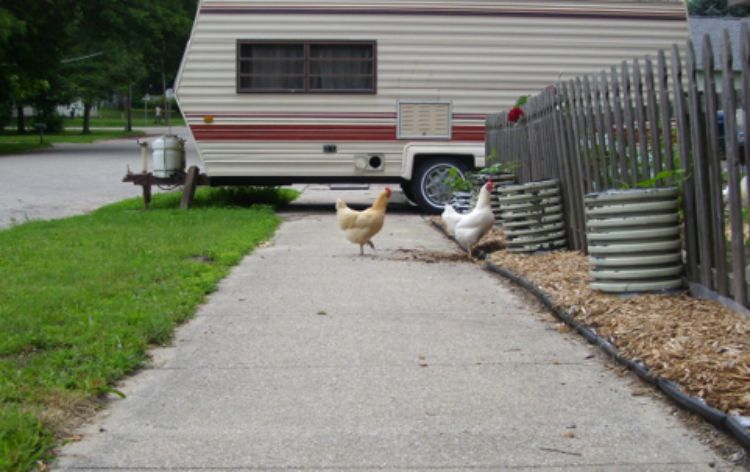Category 4 sites under the Right to Farm Act Site Selection GAAMP
Site Selection GAAMP provides local authority to permit livestock keeping in primarily residential areas

Michigan enacted the Right to Farm Act (RTFA) (MCL 286.471 et seq.) in 1981 to protect farms from nuisance claims from non-farm neighbors. It is codification of the principle that a farm should get protection from suits from those who choose to live near farms. It protects farms even if they change their operation, grow different crops or livestock, expand, and more. New farms, if they follow Generally Accepted Agricultural and Management Practices (GAAMPs), also receive this protection. In 2000, the Michigan Legislature amended the RTFA to severely restrict local government from regulating farms. The act reads:
“…any local ordinance, regulation, or resolution that purports to extend or revise in any manner the provisions of this [Right to Farm] act or generally accepted agricultural and management practices developed under this act. Except as otherwise provided in this section, a local unit of government shall not enact, maintain, or enforce an ordinance, regulation, or resolution that conflicts in any manner with this act or generally accepted agricultural and management practices developed under this act.” (Brackets added, MCL 286.474(6))
To learn more about RTFA preemption of local ordinances, read another article from Michigan State University Extension, “Right to Farm Act can preempt local regulation authority, but not all local regulations.”
The Michigan Commission of Agriculture and Rural Development annually updates the GAAMPs, considering advances in farm management best practices and changes in agriculture related consumer sentiment and community interests. For instance, while there is current interest in urban agriculture, backyard poultry, and access to fresh local food, there is also public opinion that farm animals should not exist in an urban or suburban setting where there are otherwise no or few other agricultural activities.
An amendment in 2014 to the “GAAMPs for Site Selection and Odor Control for New and Expanding Livestock Facilities” (Site Selection GAAMP) allows for some local governments to be able to accommodate small livestock farms through local ordinances, if desirable. In other words, urban and suburban communities can develop a local solution that works best, incorporating the opinions of local residents and policy makers.
The Site Selection GAAMP defines four categories of sites relative to the siting of livestock facilities. Category 1 sites are locations that have been traditionally used for agricultural purposes and are in an area with a relatively low residential housing density. These are locations where very large animal operations can locate. Category 2 sites have more non-farm residences in the rural neighborhood, thus additional technologies and management practices could be needed to make livestock facilities acceptable in these areas. Category 3 sites are locations that are not generally acceptable for new and expanding livestock facilities of 50 animal units or greater because of environmental issues or the distance and density of non-farm residences.
An animal unit is the number of animals equivalent to one slaughter and feeder cattle. Depending on the animal, 50 animal units are proportionate based on a number of factors. For example, 50 animal units means 125 swine, 500 sheep and lambs, 25 horses, 2,750 turkeys, 5,000 laying hens or broilers.
Category 4 sites are locations that are not acceptable for livestock unless a local government ordinance provides for it. Category 4 sites are locations that are “primarily residential,” that is there are more than 13 non-farm residences within 1/8 mile of the site or any non-farm residence within 250 feet (as measured from the livestock enclosure), according to the Site Selection GAAMP.
In other words, livestock facilities in “primarily residential” locations are not necessarily banned from those locations, rather the decision as to if it is an appropriate location is shifted from the state, through GAAMPs, to the local government to determine. If a property is determined to have a Category 4 site, compliance with the Site Selection GAAMP is not possible at that site, so RTFA will not preempt the local ordinance. At a Category 4 site, livestock is only permissible if allowed by local ordinance.
In addition to this article, related Michigan State University Extension articles include:
- Focus on community food, local food and the small farmer: Changes to Site Selection GAAMP mean communities have greater opportunity to plan for food systems
- Community food system policy-development resources for local government
- Right to Farm Act can preempt local regulation authority, but not all local regulations
- Court clarification on Right to Farm and local regulation



 Print
Print Email
Email




